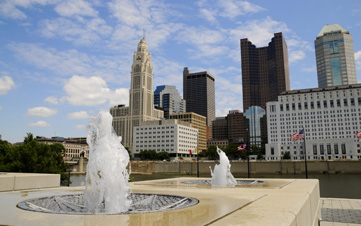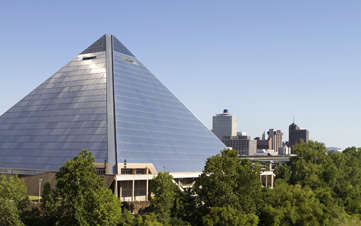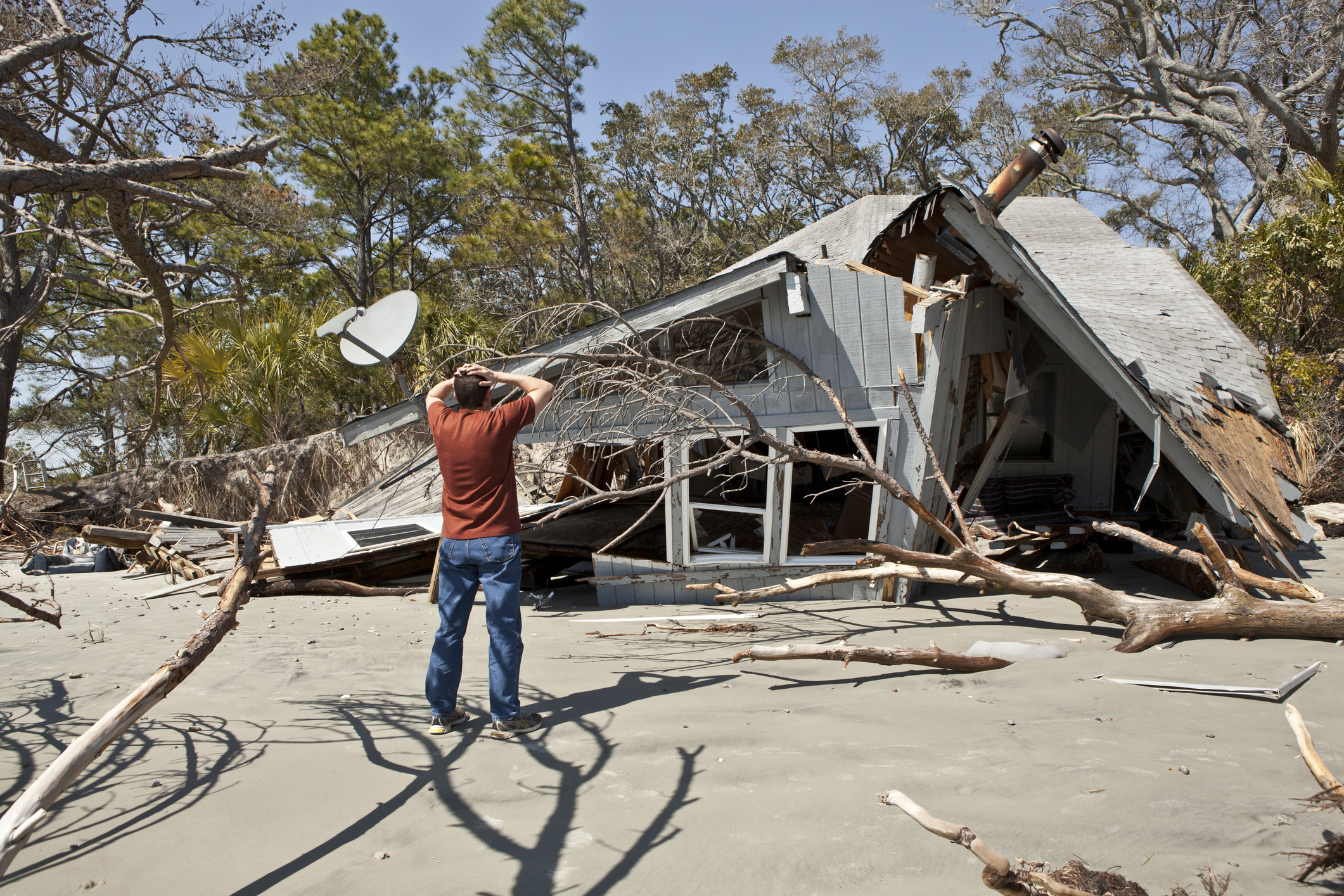10 Most Affordable Big Cities in the U.S.
Big cities offer more employment opportunities, more things to do and more people to meet than smaller towns.


Big cities offer more employment opportunities, more things to do and more people to meet than smaller towns. But they also have drawbacks, from congestion and crime to high costs. That’s why a big city with a small price tag is uniquely appealing, offering urban perks without urban expenses.
We identified the 10 U.S. cities with populations above 250,000 that have the lowest living costs. Cheap living alone doesn’t guarantee a good place to live; we also list household incomes, home values and unemployment rates for each of these cities, so you can focus on the economic factors that are most important to you. In all cases, home values are below the national average, and in most cases jobless rates are better than average. Household incomes in these cities fall below the national average, but in many cases paychecks are solid relative to living costs. Because big-city traffic can impact your quality of life, we even list the average commute times for workers.
Take a look at our 2014 list of the most affordable big cities in America, and decide if one of these cheap places to live makes sense for you.
Disclaimer
The Council for Community and Economic Research’s Cost of Living Index is based on annual data from 2013 for 308 urban areas. City populations, household incomes and home values are from the U.S. Census Bureau. Unemployment rates are from the U.S. Bureau of Labor Statistics and indicate the preliminary city rates (not seasonally adjusted) for August 2014. The cities are ranked and listed in reverse order by cost of living.

10. Louisville, Ky.
- Cost of living: 8.6% below U.S. average
- City population: 609,893
- Median household income: $44,111 (U.S.: $53,046)
- Median home value: $139,400 (U.S.: $181,400)
- Unemployment rate: 6.4% (U.S.: 6.1% in August 2014)
- Average commute to work: 22.2 minutes (U.S.: 25.4 minutes)
Louisville isn’t the capital of Kentucky—tiny Frankfort is—but it is the state’s largest and arguably most important city, much to the chagrin of Lexington. Louisville is home to three Fortune 500 companies: Humana, Yum Brands (owner of KFC, naturally) and Kindred Healthcare. Lexington? Zero. As for college basketball, a near-religion in Kentucky, the University of Louisville won the NCAA men’s title as recently as 2013. (The University of Kentucky, in Lexington, lost in the 2014 final and last won in 2012.) And despite Lexington’s label as “Horse Capital of the World,” it is Louisville’s Churchill Downs that plays host to the annual Kentucky Derby.
It’s not all coming up roses for Louisville. The city has an above-average unemployment rate and the third-longest average commute on this list. And despite lower-than-average living expenses, 87 other cities including the next nine cities on our list are cheaper to live in than Louisville, according to the Council for Community and Economic Research’s Cost of Living Index. (The remainder of those cities didn’t make this list because their populations are too small.)

9. Oklahoma City
- Cost of living: 9.7% below U.S. average
- City population: 610,613
- Median household income: $45,704
- Median home value: $131,000
- Unemployment rate: 4.4%
- Average commute to work: 20.2 minutes
There’s something about capital cities when it comes to affordable living and economic stability. Jobs tend to be reliable because the state government needs to function no matter how well the economy is doing; there’s often a large university nearby that provides employment opportunities, services and inexpensive things to do; and big businesses set up shop to take advantage of an educated workforce and proximity to the capitol. Four of the 10 cities to make our list of affordable big cities are state capitals.
Oklahoma City is no exception. Oklahoma State University has a campus in town, and the University of Oklahoma is located just south of the city limits in Norman (although many facilities are in Oklahoma City proper). Chesapeake Energy and Devon Energy, both Fortune 500 companies, are based in Oklahoma City. When the city government recently surveyed residents, 84% called Oklahoma City a good place to live (10 percentage points better than the average large U.S. city) and 78% called it a good place to work (5 percentage points better than average).
On the downside, Oklahoma, which is part of the infamous Tornado Alley, is number six on our list of States Most at Risk of Disaster, based on estimated property damage since 2006.

8. Lincoln, Neb.
- Cost of living: 10.3% below U.S. average
- City population: 268,738
- Median household income: $49,504
- Median home value: $142,200
- Unemployment rate: 2.9%
- Average commute to work: 17.6 minutes
The smallest big city to make our top 10, Lincoln boasts the highest median household income on this list. Paychecks are helped by the fact that the local jobless rate is below 3%, so employers are competing to fill openings. That Lincoln is the capital of Nebraska helps, too. Making Lincoln even more appealing to workers, the typical commute is 31% shorter than that of the average U.S. city.
Underscoring Lincoln’s affordability, we recently named it one of the 10 Cheapest Cities You Will Want to Live In—meaning it’s not only inexpensive but there’s fun stuff to do, too. After work, check out the new Railyard entertainment district, home to restaurants, bars, live performance spaces and an ice rink in winter.

7. Lexington, Ky.
- Cost of living: 10.3% below U.S. average
- City population: 308,428
- Median household income: $48,779
- Median home value: $163,000
- Unemployment rate: 5.3%
- Average commute to work: 19.6 minutes
- In contrast to the low living expenses, salaries are relatively strong. Lexington’s median household income of nearly $49,000 a year is the second-highest on this list. The biggest employers in Fayette County, which encompasses Lexington, include the University of Kentucky and Lexmark International.
Horses aren’t cheap in Lexington, but many other things are. According to the Cost of Living Index, groceries run nearly 14% below the national average, and housing-related costs come in almost 24% below average (see mortgage rates in this area). Not bad considering Lexington is the second-biggest city in the Bluegrass State after Louisville.

6. San Antonio
- Cost of living: 11.2% below U.S. average
- City population: 1.41 million
- Median household income: $44,937
- Median home value: $113,100
- Unemployment rate: 5.0%
- Average commute to work: 23.4 minutes
Forget the Alamo. San Antonio’s true claim to fame just might be its right to call itself “America’s Biggest Cheap City.” Often overshadowed, San Antonio actually has a bigger population than Dallas or Austin–yet its living costs are much lower than either of its better-known Texas neighbors. It also has more than half a million more people than the second-largest city on this list, Columbus, Ohio. Nearly two-thirds of San Antonio’s residents are Hispanic, giving the city a multicultural vibe.
Speaking of the Alamo, entry to the downtown landmark is free, fitting for such an affordable place to live. There’s also no charge to stroll the nearby River Walk. A margarita can be found for just $3 during happy hour at one of the bars lining the water.

5. Tulsa
- Cost of living: 11.7% below U.S. average
- City population: 398,121
- Median household income: $40,781
- Median home value: $121,700
- Unemployment rate: 4.5%
- Average commute to work: 18.3 minutes
This Oklahoma city traces its roots back to the Western expansion, first as a cattle town and later as the “Oil Capital of the World.” Reminders can be found everywhere. The Gilcrease Museum, which specializes in exhibits about the American West, offers free admission on the first Tuesday and third Sunday of each month. Another must-see is the 1920s villa that is home to the Philbrook Museum of Art. Construction of the opulent Italian renaissance building was financed by the oil boom. There’s no charge to visit on the second Saturday of each month.
Another plus: The average apartment runs just $604 a month, about one-third less than the national average. It’s no wonder Tulsa ranked high on our list of Affordable Big Cities for Renters.

4. Nashville
- Cost of living: 12.4% below U.S. average
- City population: 634,434
- Median household Income: $45,982
- Median home value: $165,000
- Unemployment rate: 6.2%
- Average commute to work: 23.2 minutes
Nashville is known as “Music City” for good reason. Not only is it the heart of today’s country music scene, but it preserves the history of the musical genre in places such as the Country Music Hall of Fame, the Johnny Cash Museum and the Grand Ole Opry. Shows at the Grand Ole Opry can be expensive, but at smaller venues such as the Bluebird Café you can usually pay a small cover charge to see a mix of up-and-comers and established names perform.
Travel & Leisure magazine named the Tennessee capital one of America’s favorite cities. Visitors tout its live music scene and barbeque; residents give Nashville high marks for its friendliness and affordability. Both groups, however, knock its lack of ethnic food.

3. Omaha
- Cost of living: 12.8% below U.S. average
- City population: 434,353
- Median household income: $46,978
- Median home value: $132,900
- Unemployment rate: 3.9%
- Average commute to work: 18.0 minutes
The second Nebraska city to make our top 10, Omaha has a lot in common with Lincoln: low unemployment, low living costs and high incomes relative to those costs. But while Lincoln can boast that it’s home to the governor, Omaha can boast that it’s home to Warren Buffett. The billionaire chief of Berkshire Hathaway, famous for his frugality, has lived in the same Omaha house since 1958.
Considering it’s our Best City for Cheapskates, rest assured that you don’t need to be a billionaire to enjoy activities around town. According to Tripadvisor, the most popular attractions in Omaha are the Henry Doorly Zoo (discounted admission from early November through early March) and TD Ameritrade Park ($11.50 general admission for the College World Series in June). Omaha also has nearly three times as many public libraries and museums as the average U.S. city. Many host free (or nearly free) events.

2. Columbus, Ohio
- Cost of living: 12.8% below U.S. average
- City population: 822,553
- Median household Income: $43,992
- Median home value: $134,900
- Unemployment rate: 4.4%
- Average commute to work: 21.2 minutes
Despite being home to the state capitol as well as multiple Fortune 500 corporations, Columbus has a small-town feel to go along with its small-town living costs. Locals live and die by the fate of their beloved Ohio State University football team. Scouting reports dominate water-cooler talk, and streets become deserted as kickoff approaches. But you’ll pay a steep price for a seat in the stadium on game day. Buckeyes sports fans trying to stretch their dollars opt instead to watch football on TV and buy tickets to many other Ohio State sporting events—think volleyball, gymnastics and the like—for just $8 a piece.
Your buck doesn’t stop there. As one of Kiplinger’s 10 Best Cities for Cheapskates, Columbus offers many low-cost activities beyond the OSU campus. The renowned Columbus Zoo charges seniors and residents half-price admission on selected days. The Ohio State Fair, which attracts more than 900,000 visitors every summer for pig races, fireworks, foods on a stick and more, charged $6 for advance-purchase tickets in 2014.

1. Memphis
- Cost of living: 14.6% below U.S. average
- City population: 653,450
- Median household income: $36,817
- Median home value: $98,300
- Unemployment rate: 9.9%
- Average commute to work: 21.5 minutes
- One saving grace for Memphis is the super-low cost of housing. The median home value is 46% below the national median (see mortgage rates in this area), and the average apartment rent of $709 per month is 21% below the U.S. average. Use the money you save to enjoy a Grizzlies pro basketball game (tickets start at $10) followed by a heaping platter of the city’s signature ribs.
When we compiled our annual list of the Cheapest Places to Live in America, Memphis was by far the largest city to make the cut. In fact, five of the top 10 cities on that list have populations below 100,000, and the second-largest city on the list, Augusta, Ga., has fewer than 200,000 residents. But bigger isn’t always better. The unemployment rate for this Tennessee city is nearly 10%, despite the presence of three Fortune 500 companies. The poverty rate is 26.2%, significantly higher than the nation’s 14.9% average.
Get Kiplinger Today newsletter — free
Profit and prosper with the best of Kiplinger's advice on investing, taxes, retirement, personal finance and much more. Delivered daily. Enter your email in the box and click Sign Me Up.

-
 Two Don'ts and Four Dos During Trump's Trade War
Two Don'ts and Four Dos During Trump's Trade WarThe financial rules have changed now that tariffs have disrupted the markets and created economic uncertainty. What can you do? (And what shouldn't you do?)
By Maggie Kulyk, CRPC®, CSRIC™
-
 I'm Single, With No Kids: Why Do I Need an Estate Plan?
I'm Single, With No Kids: Why Do I Need an Estate Plan?Unless you have a plan in place, guess who might be making all the decisions about your prized possessions, or even your health care: a court.
By Cynthia Pruemm, Investment Adviser Representative
-
 12 Great Places to Retire in the Midwest
12 Great Places to Retire in the MidwestPlaces to live Here are our retirement picks in the 12 midwestern states.
By Stacy Rapacon
-
 10 Cheapest Small Towns to Live In
10 Cheapest Small Towns to Live InThe cheapest small towns might not be for everyone, but their charms can make them the best places to live for plenty of folks.
By Dan Burrows
-
 Best Cold Weather Places to Retire
Best Cold Weather Places to RetirePlaces to live Some like it hot; others not so much. Here are the 12 best places to retire if you can't stand the heat.
By Stacy Rapacon
-
 The Cheapest Places To Retire in the US
The Cheapest Places To Retire in the USWhen you're trying to balance a fixed income with an enjoyable retirement, cost of living is a crucial factor to consider.
By Stacy Rapacon
-
 The Six Best Places to Retire in New England
The Six Best Places to Retire in New Englandplaces to live Thinking about a move to New England for retirement? Here are the best places to land for quality of life, affordability and other criteria.
By Stacy Rapacon
-
 Best Cold Weather Places to Retire
Best Cold Weather Places to Retireplaces to live Some like it hot; others not so much. Here are the 12 best places to retire if you can't stand the heat.
By Stacy Rapacon
-
 15 Ways to Prepare Your Home for Winter
15 Ways to Prepare Your Home for Winterhome There are many ways to prepare your home for winter, which will help keep you safe and warm and save on housing and utility costs.
By Donna LeValley
-
 Hurricane Insurance Claims: 10 Things You Need to Know
Hurricane Insurance Claims: 10 Things You Need to KnowBecoming a Homeowner Hurricane damage? Know what your insurance will and won't cover to make the most of your policy if you need to file a claim.
By Kimberly Lankford
